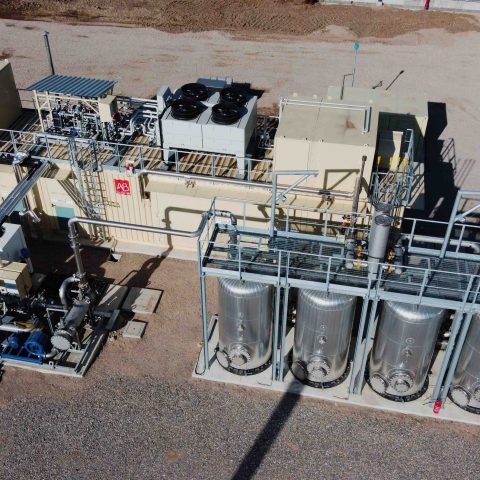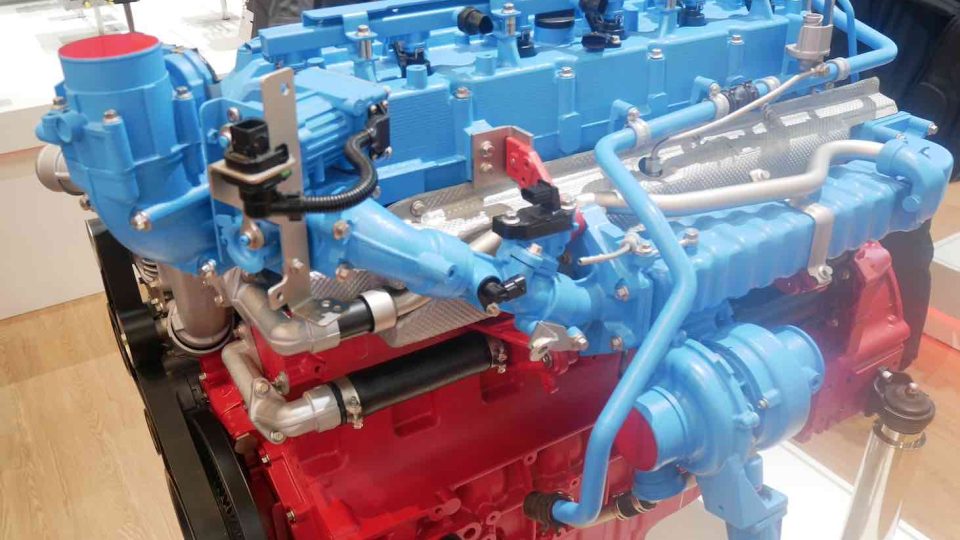Bio-LNG from biogas. The new liquefier created by AB with the Dutch Stirling Cryogenics
The Italian manufacturer AB, supported by the Dutch specialists from Stirling Cryogenics, created a plant capable of receiving incoming gaseous biomethane and producing liquid biomethane, with a production capacity of up to 12 tonnes per day. CH4LNG is the name of the liquefier designed to contribute to decarbonisation in the transport sector and beyond

The Italian manufacturer AB, supported by the Dutch specialists from Stirling Cryogenics, created a plant capable of receiving incoming gaseous biomethane and producing liquid biomethane, with a production capacity of up to 12 tonnes per day. CH4LNG is the name of the liquefier designed to contribute to decarbonisation in the transport sector and beyond. Focusing on the key concepts of small scale and modularity. Disclaimer: the picture above refers to a previous cogeneration plant manufactured by AB, BIOCH4NGE.
The whole interview with Federico Capra, R&D Engineer at AB is available at page 12 of the latest issue of Powertrain. The following is an excerpt.
AB and Stirling Cryogenics for the CH4LNG liquefier
Where does the combination of skills between AB and Stirling Cryogenics come from? And what are the main goals of the agreement that has been signed?
AB is a national and international benchmark for cogeneration from natural gas and biogas. This has allowed us to develop solid technological know-how, which has already been expressed in new products such as the BIOCH4NGE system, dedicated to upgrading biogas to biomethane. Gaseous biomethane is a CO2-neutral fuel, which is currently distributed using existing natural gas infrastructure. The natural evolution of the supply chain is to add the biomethane liquefaction step, in order to obtain a fuel with higher added value to be spent on the market.
In such a scenario, the expertise of Stirling Cryogenics, which can boast decades of experience in the field of methane/natural gas liquefaction, fits in. The aim of the agreement is to develop a biomethane liquefaction system that relies on the expertise of Stirling Cryogenics, and at the same time has the quality and reliability standards typical of AB products, meeting the needs of the biogas sector.
Within the framework of the agreement, what will be the role of Stirling Cryogenics and, above all, what will be the role of AB Energy?
The roles are well defined and complementary indeed. Stirling Cryogenics will act as a technological supplier of cryogenerators to AB. The cryogenerator is the heart of the plant, that is to say the machine that generates the cooling power required for the liquefaction of biomethane.
AB will integrate the cryogenerator into a complete turnkey product for the end customer. A strong collaboration between AB, Stirling Cryogenics and its parent company Hysytech is paramount for the success of the project.
AB approached this application by acting as a single interface for all the customer’s needs, so it will carry out the design, construction, installation and start-up of the plant in-house. Finally, AB will be able to rely on its extensive network of specialised technicians in order to maintain the installations and provide customers with full assistance.
What are the main features of the CH4LNG liquefier?
The CH4LNG liquefier is designed to receive gaseous biomethane and produce liquid biomethane, with a production capacity of up to 12 tonnes per day (Tpd; i.e. the production of a typical 1 MWel biogas plant is equal to about 5 tpd of LNG).
Following the well-known AB approach, the CH4LNG is a modular and fully containerised system, requiring minimal field installation. The CH4LNG system is designed to be highly decentralised and to decarbonise the trucking industry, as bio-LNG is the only carbon-neutral fuel available today. The possibility of having bio-LNG production plants distributed throughout the territory, supplying nearby service stations, further reduces environmental impact, emissions and costs, moving towards a logic of locality that overturns the need to transport fuel for hundreds of km.









